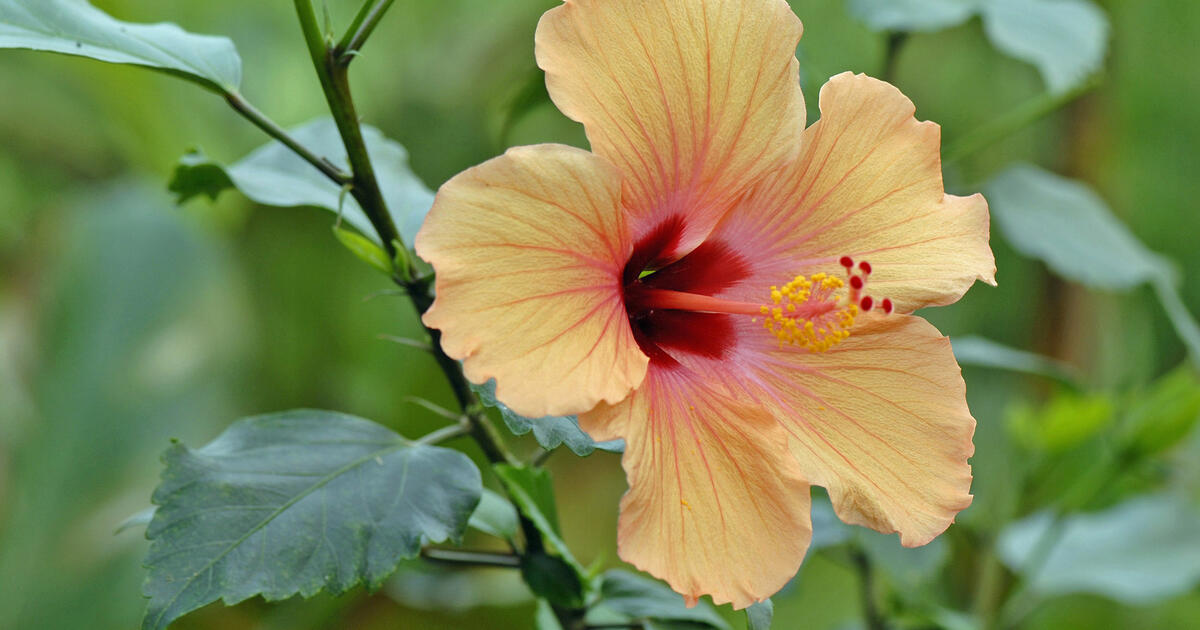
Rose mallow, also known as Hibiscus moscheutos, is a breathtakingly beautiful flowering plant that belongs to the family Malvaceae. This perennial plant is native to North America and can be found in wetland areas, marshes, and along the shores of lakes and rivers. With its large, showy blooms and vibrant colors, rose mallow is a favorite among gardeners and plant enthusiasts.
But there’s more to rose mallow than just its stunning appearance. In this article, we will explore 15 astounding facts about rose mallow that will deepen your appreciation for this remarkable plant. From its historical uses to its ecological importance, you’ll discover why rose mallow is truly a standout in the world of plants.
Key Takeaways:
- Rose Mallow, also known as Hibiscus moscheutos, is a stunning and versatile flower native to North America. It attracts pollinators, has edible and medicinal properties, and is low-maintenance.
- With its long blooming season, drought-tolerant varieties, and ability to provide shade and privacy, Rose Mallow is a great addition to any garden. It’s easy to propagate and enhances wildlife habitats.
A Gorgeous and Versatile Flower
Rose Mallow, also known as Hibiscus moscheutos, is a stunning flowering plant that belongs to the family Malvaceae. It is widely admired for its large and vibrant blossoms, which come in various colors like pink, red, white, and purple.
Native to North America
Rose Mallow is native to North America and can be found growing in wetlands, marshes, and along riverbanks. It has also become a popular garden plant due to its enchanting beauty.
Thrives in Moist Soil
This perennial flowering plant thrives in moist soil conditions, making it an ideal choice for gardens with high humidity or areas prone to occasional flooding.
Attracts Pollinators
The large, showy flowers of Rose Mallow are a magnet for pollinators such as bees, butterflies, and hummingbirds. These insects play a crucial role in the pollination process and help in the reproduction of the plant.
Edible and Medicinal Properties
Not only is Rose Mallow visually appealing, but certain parts of the plant also have edible and medicinal properties. The leaves can be used to make herbal teas, and the flowers are sometimes used in traditional medicine for their therapeutic benefits.
Long Blooming Season
Rose Mallow has an extended blooming season that typically lasts from summer to early fall. This means you can enjoy its stunning flowers for an extended period.
Drought-Tolerant Variety
Despite its preference for moist soil, certain varieties of Rose Mallow are known to be drought-tolerant once established. This makes them a suitable choice for regions with limited water availability.
Provides Shade and Privacy
Due to its tall growth habit and large, dense leaves, Rose Mallow can be used as a natural screen to provide shade and privacy in your garden.
Low-Maintenance Plant
Rose Mallow is relatively low-maintenance and requires minimal care once established. It is a great choice for beginner gardeners or those looking for easy-to-grow plants.
Symbol of Love and Beauty
Throughout history, the Rose Mallow flower has been associated with love and beauty. Its enchanting appearance and vibrant colors make it a popular choice for romantic gestures and special occasions.
Versatile in Landscaping
Rose Mallow can be a versatile addition to your landscape design. It can be used as a focal point in flower beds, as a border plant, or planted in large containers to add a touch of elegance to your outdoor space.
Hardy in Various Climates
Rose Mallow can adapt to a wide range of climatic conditions, making it suitable for both hot and cold regions. It can tolerate freezing temperatures and is known to grow well in zones 4 to 9 on the USDA Hardiness Zone Map.
Excellent for Erosion Control
Due to its extensive root system, Rose Mallow is excellent for erosion control. The roots help stabilize the soil, preventing erosion in areas with sloping terrain or near bodies of water.
Enhances Wildlife Habitats
By planting Rose Mallow in your garden, you can create a welcoming habitat for various wildlife species. The plant provides food and shelter for birds, insects, and small mammals, fostering biodiversity in your backyard.
Easy to Propagate
Rose Mallow can be easily propagated from seeds or through division. This allows you to expand your garden or share the beauty of this flowering plant with friends and family.
Conclusion
Rose Mallow, also known as Hibiscus moscheutos, is a stunning flowering plant that is known for its beauty and versatility. With its large vibrant flowers, it adds a splash of color to any garden or landscape. But beyond its visual appeal, rose mallow also boasts some fascinating facts that make it even more intriguing.
From its size and growth habits to its medicinal properties and cultural significance, rose mallow has captivated researchers, gardeners, and nature enthusiasts alike. Whether you’re a novice gardener or a seasoned plant lover, learning about these astounding facts is sure to deepen your appreciation for this remarkable plant.
So, if you’re ready to delve into the world of rose mallow, let’s explore 15 astounding facts that will leave you in awe of this gorgeous plant.
FAQs
1. How tall does rose mallow grow?
Rose mallow can reach an impressive height of 6 to 8 feet, making it a great focal point in any garden.
2. What colors do rose mallow flowers come in?
Rose mallow flowers come in a wide range of colors, including shades of white, pink, red, and even bicolor varieties.
3. Are rose mallow flowers edible?
Yes, rose mallow flowers are edible and can be used in salads, teas, or as a decorative element in various dishes.
4. How long does it take for rose mallow to bloom?
Rose mallow typically blooms from mid-summer to early fall, and each flower can last up to one day.
5. Can rose mallow tolerate drought conditions?
Yes, rose mallow is a hardy plant that can handle drought conditions, although regular watering is still recommended for optimal growth.
6. Does rose mallow attract pollinators?
Absolutely! Rose mallow’s large flowers and nectar-rich blooms are a magnet for bees, butterflies, hummingbirds, and other pollinators.
7. Can rose mallow be grown in containers?
Yes, rose mallow can be grown in containers as long as the pot is large enough to accommodate its robust root system.
8. Does rose mallow have any medicinal properties?
Yes, rose mallow has been used in traditional medicine to alleviate symptoms of respiratory conditions, reduce inflammation, and promote overall wellness.
9. How long does it take for rose mallow seeds to germinate?
Rose mallow seeds usually germinate within 7 to 21 days, depending on the growing conditions and temperature.
10. Is rose mallow a native plant?
Yes, rose mallow is native to North America, particularly in wetland habitats like marshes, swamps, and riverbanks.
Rose Mallow's beauty and versatility make this stunning flower a must-have in any garden. If you enjoyed learning about Rose Mallow, why not explore more fascinating plants/18-fascinating-facts-about-brunnera/">perennial plants like Brunnera? Dive deeper into the world of botany and discover a treasure trove of intriguing plant facts that will leave you in awe of nature's wonders. From the enigmatic to the extraordinary, there's always something new to uncover in the realm of flora.
Was this page helpful?
Our commitment to delivering trustworthy and engaging content is at the heart of what we do. Each fact on our site is contributed by real users like you, bringing a wealth of diverse insights and information. To ensure the highest standards of accuracy and reliability, our dedicated editors meticulously review each submission. This process guarantees that the facts we share are not only fascinating but also credible. Trust in our commitment to quality and authenticity as you explore and learn with us.


